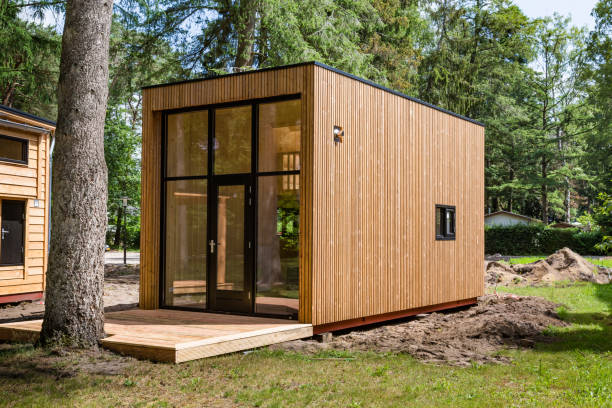Tiny homes are becoming more popular, especially in urban areas. These small, efficient homes offer a unique way of living that many city dwellers find appealing. With the rising cost of living, limited space, and environmental concerns, tiny homes are a solution to many challenges faced in urban environments.
In this article, we will explore why tiny homes are on the rise, their benefits, and what to consider before making the move.
What Are Tiny Homes?
Tiny homes are small, portable living spaces typically ranging from 100 to 400 square feet. They are designed to be efficient and minimalist, often featuring innovative storage solutions and multi-purpose furniture. Despite their size, tiny homes are designed to offer comfort and functionality for those who choose this lifestyle.
Tiny homes allow individuals to live in a way that is more sustainable, affordable, and flexible. They can be built on trailers for mobility or as fixed structures, depending on the needs of the homeowner.
The Benefits of Tiny Homes in Urban Areas
Tiny homes are becoming an increasingly attractive option in cities. As urban areas continue to grow, people are looking for new ways to solve problems like high housing costs, overcrowded neighborhoods, and environmental concerns. These small homes are providing a solution that fits the needs of many city dwellers.
Affordable Housing Option
One of the main reasons tiny homes are gaining popularity is the rising cost of living in urban areas. The high price of rent and homeownership in cities makes it difficult for many people, especially younger generations, to afford traditional housing. Tiny homes offer a much more affordable alternative, with lower construction costs and reduced utility bills.
Space Efficiency
Urban living often comes with limited space. Traditional apartments or homes in cities may have small rooms, but tiny homes, built by skilled tiny house builders, maximize every inch of space.
Innovative designs and clever storage solutions make tiny homes surprisingly spacious. Multi-functional furniture, built-in shelves, and creative layouts help make the most out of a small area
Sustainability and Environmental Impact
Tiny homes are also a more sustainable living option. They use fewer materials to build, consume less energy and have a smaller carbon footprint compared to traditional homes. Many tiny homeowners focus on eco-friendly living. They use solar panels, collect rainwater, and choose energy-efficient appliances.
Flexibility and Mobility
For some people, the appeal of tiny homes lies in their mobility. Many tiny homes are built on trailers, allowing homeowners to move their homes to different locations easily. This mobility lets people live in various neighborhoods, travel, or work remotely. They can enjoy a comfortable living space while doing so.
What to Consider Before Moving into a Tiny Home
Before you make the move into a tiny home, there are some important things to consider. While tiny homes offer a range of benefits, they also come with their own set of challenges that you need to think through.
- Zoning Laws and Regulations
- Space Limitations
- Building Your Tiny Home
- Community and Social Considerations
Is a Tiny Home Right for You?
Tiny homes are not just a trend. They show a change in how people view living spaces, sustainability, and affordability in cities. They offer a unique solution to the challenges posed by high living costs, limited space, and environmental concerns. If you are looking for a more affordable, efficient, and sustainable way of living, a tiny home may be the perfect option for you.
Start your journey to a simpler, more sustainable lifestyle today!
Copyright © 2025 California Business Journal. All Rights Reserved.
For California Business Journal Disclaimers, go to https://calbizjournal.com/terms-conditions/.




